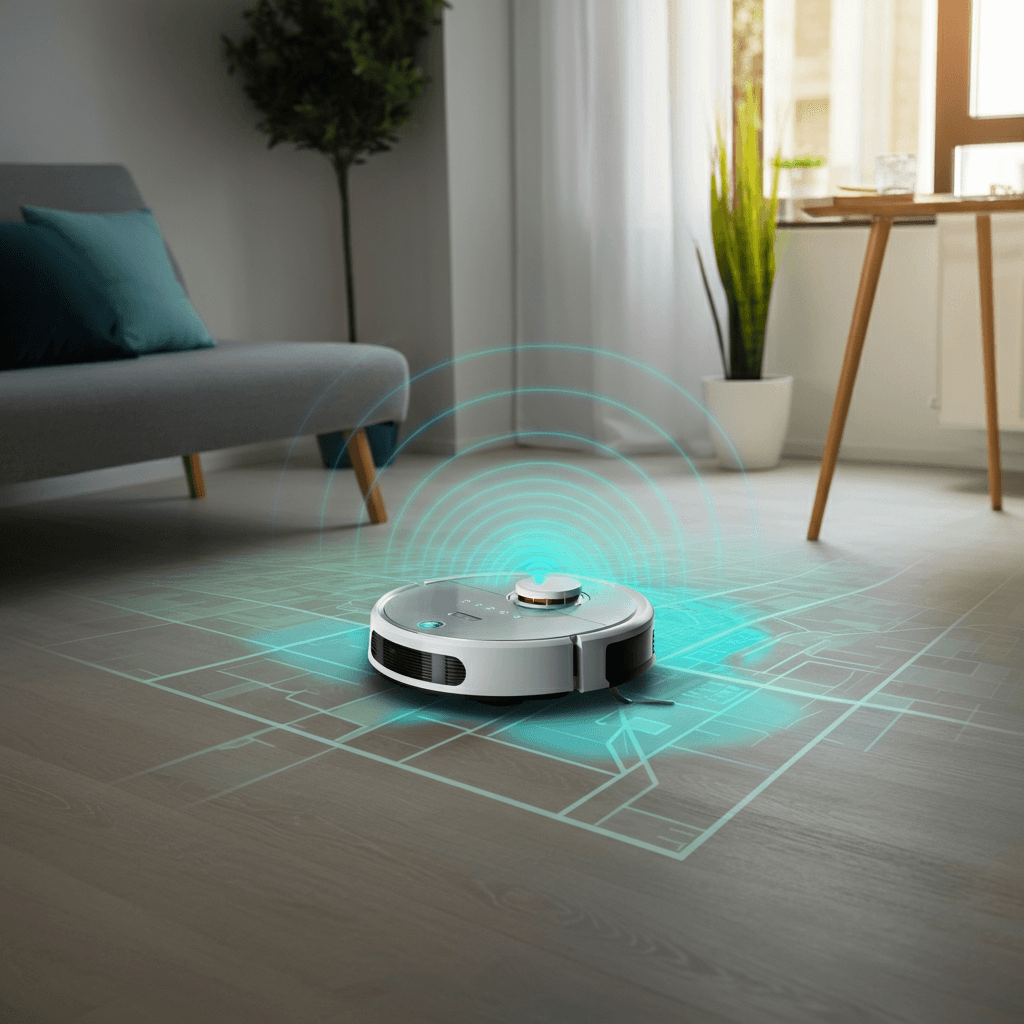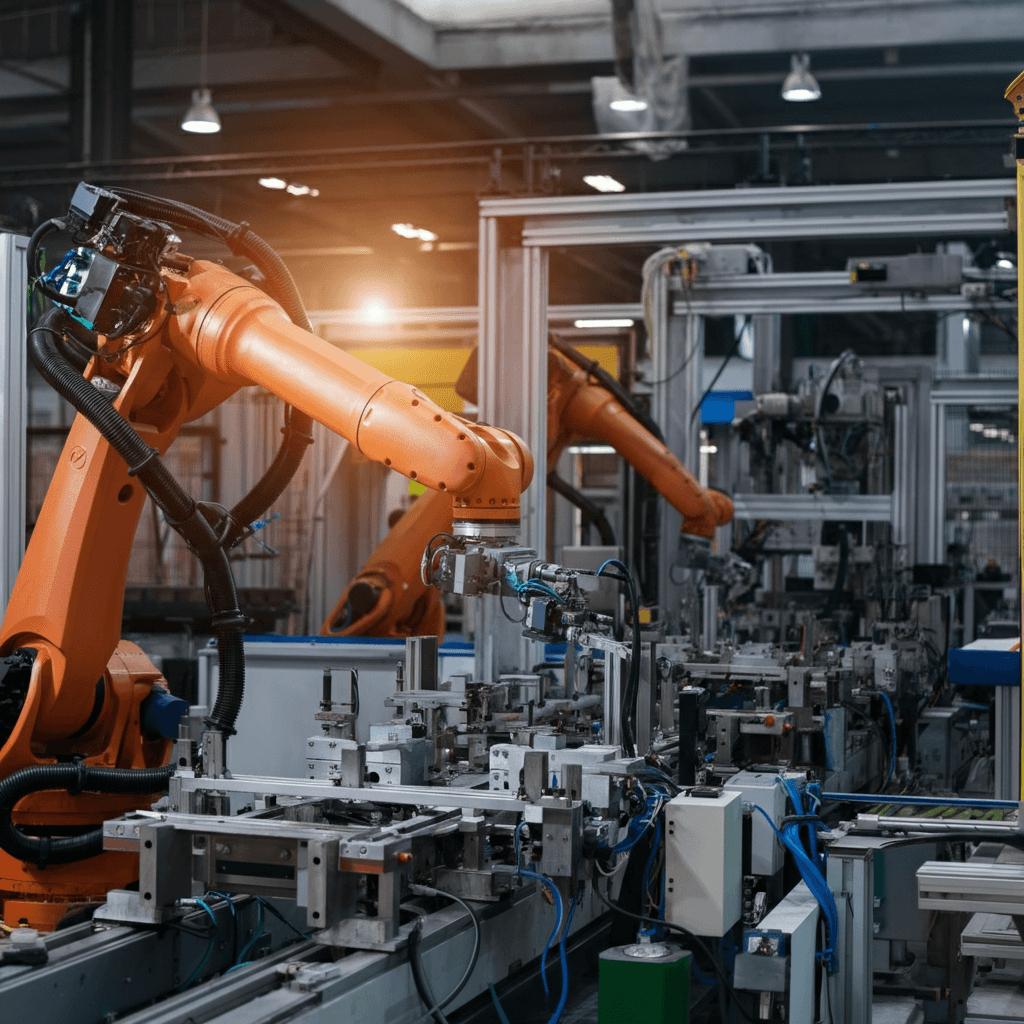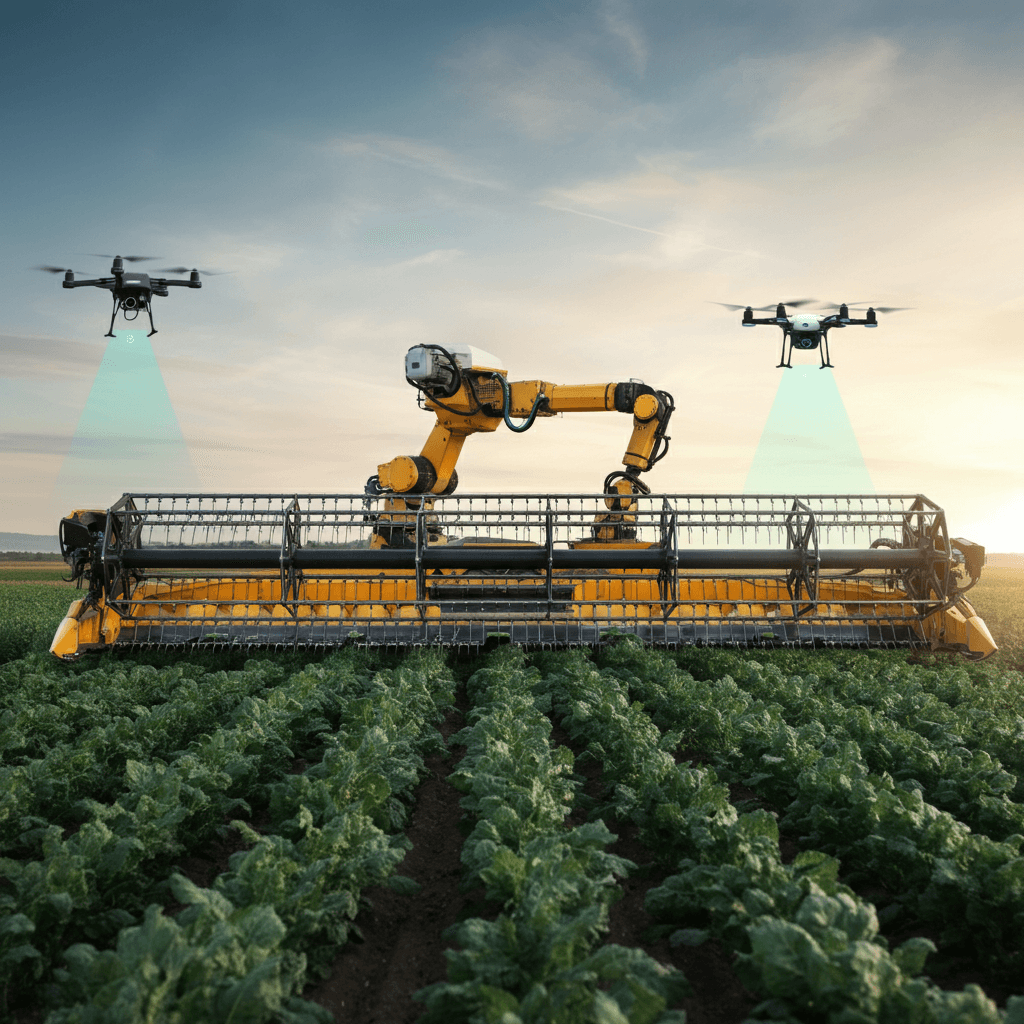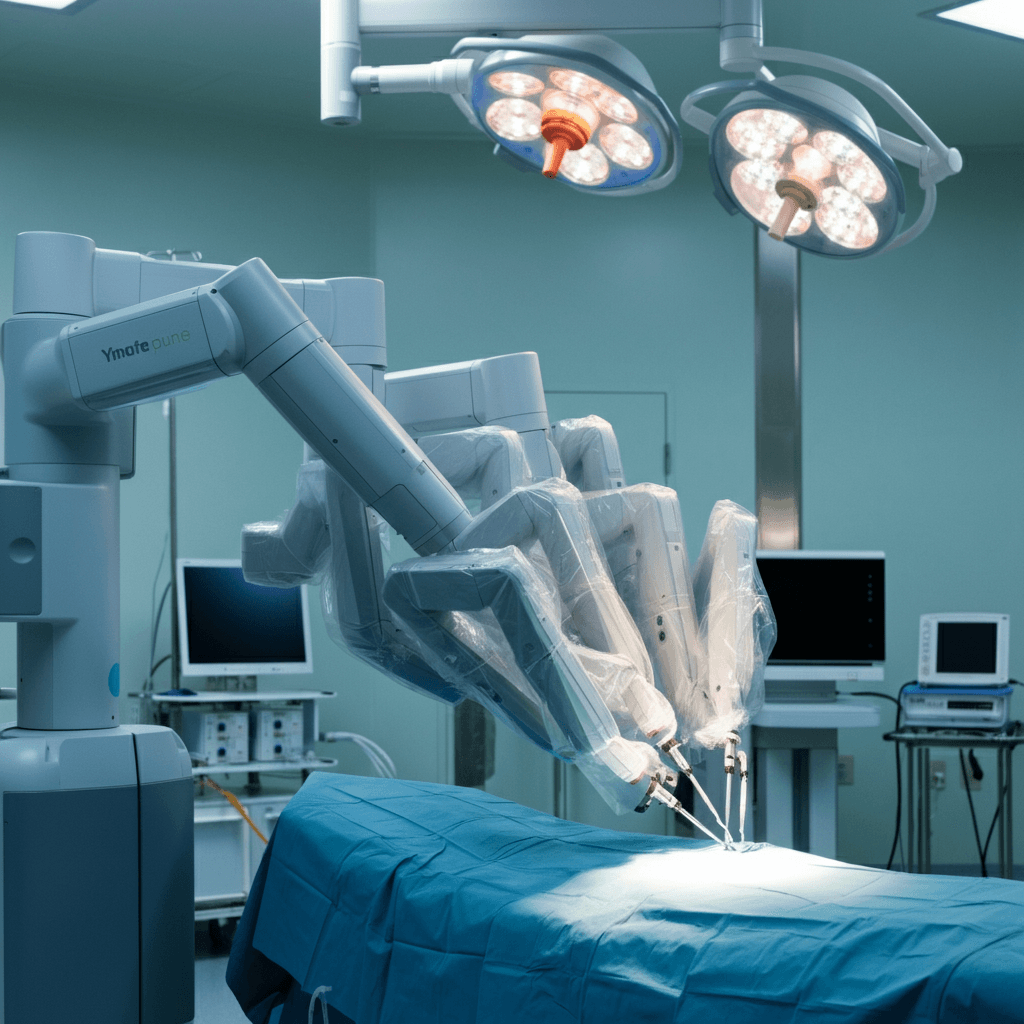Artificial intelligence (AI) has become a driving force in the field of robotics, propelling innovations that were once confined to science fiction into real-world use cases. By 2024, AI-powered robotics have firmly established themselves in our homes, workplaces, and industries. AI-powered robotics are also being integrated into healthcare facilities to enhance operational efficiency and patient care. From smart assistants helping us with daily chores to industrial robots revolutionizing automation, AI-driven robotics are transforming the way we live and work. These systems utilize natural language processing and machine learning to process user requests and provide relevant responses, making them increasingly effective in diverse applications. AI assistants are becoming more sophisticated due to advancements in generative AI technologies, further enhancing their capabilities across various domains.
This article takes a closer look at the latest advancements in AI-powered robotics, exploring how these machines are enhancing productivity, improving quality of life, and addressing challenges that were previously insurmountable. We’ll also examine real-world examples of these technologies and provide insights into their potential for reshaping the future.
Introduction to AI-Powered Robotics
Artificial intelligence (AI) has revolutionized many fields, and robotics is no exception. AI-powered robotics refers to the integration of AI with robotic systems to create intelligent machines capable of performing complex tasks autonomously. These advancements are not just limited to industrial automation or home assistance; they are making significant strides in the healthcare industry as well. By 2024, AI-powered robotics have become indispensable in various sectors, enhancing productivity, improving quality of life, and addressing challenges that were once insurmountable.
Definition of AI-Powered Robotics
AI-powered robotics combines the computational power of artificial intelligence with the mechanical capabilities of robots to create systems that can perform tasks autonomously. In the healthcare industry, this integration is transforming the way medical professionals work, leading to improved patient outcomes and enhanced quality of care. These intelligent machines can analyze vast amounts of data, learn from their experiences, and make real-time decisions, making them invaluable in medical settings.
Smart Assistants in Homes

One of the key areas where AI-powered robotics are making a significant impact is in domestic settings. Home robotics not only provide convenience but also make homes smarter and more efficient, improving the quality of life for users across the globe.
Robot Vacuums and Cleaning Assistants
Robot vacuums, like those developed by iRobot and Ecovacs, have seen dramatic advancements in 2024. Equipped with AI-powered mapping and navigation systems, these robots can clean homes more efficiently than ever before. Using sensors and machine learning algorithms, these devices map the layout of a room, avoid obstacles, and adapt to various surfaces, including hardwood floors and carpets.
Some high-end models now come with self-emptying bins, voice-command compatibility, and app integrations. Innovations are also enabling these robots to learn user preferences over time, personalizing their operations based on cleaning schedules and routines.
Personal Robots
AI-powered personal robots are evolving to perform complex tasks beyond what smart assistants like Amazon Alexa or Google Home offer. Robots like Misty II and ElliQ are designed for companionship, providing assistance to elderly users by reminding them to take medication, facilitating video calls, or simply engaging in conversation. These robots are also equipped with facial recognition technology, allowing them to adapt to individual users and provide personalized experiences. Personal robots like the PARO Therapeutic Robot provide comfort and companionship to elderly patients, reducing stress and enhancing their quality of life. PARO is used extensively with elderly patients to reduce stress and provide comfort, showcasing its effectiveness in therapeutic settings. Additionally, healthcare organizations are increasingly relying on social robots to interact with patients and visitors, further expanding the role of robotics in improving human well-being.
Additionally, some personal robots are advancing into healthcare, where they can assist with physical therapy exercises, monitor patient health through wearable devices, and alert caregivers in case of emergencies.
Advanced Robotics in Industrial Automation

The industrial sector remains the most prominent domain for robotics applications, and the advancements in AI have significantly transformed the capabilities of industrial robots in 2024. From precision tasks to heavy-duty operations, AI-powered robotics are bringing agility and efficiency to factories.
Smarter Industrial Arms
Traditional factory robots excelled in repetitive tasks, but their lack of flexibility made them less suitable for dynamic environments. AI has changed this by enabling robots to learn and adapt to new tasks. For example, robotic arms powered by AI, like those developed by ABB and Fanuc, can now identify and manipulate objects of varying shapes, sizes, and materials using advanced computer vision systems.
These robots are also able to work alongside humans, thanks to collaborative robotics or “cobots.” Cobots are designed with safety features such as sensors and force-limiting technologies that allow them to operate side-by-side with human workers without posing risks. This has enabled their use in tasks such as assembly, packing, and quality control.
Logistics and Warehouse Automation for Repetitive Tasks
AI robots are also streamlining supply chain operations. Companies like Amazon and DHL are utilizing robotic systems that sort, pack, and ship products with higher speed and accuracy. AI-powered autonomous mobile robots (AMRs), such as those developed by Boston Dynamics and AutoStore, are equipped with advanced navigation and path optimization algorithms. These robots traverse warehouse floors, minimizing human effort and reducing delivery times. Similar robotic systems are being adopted in the healthcare sector to streamline operations and alleviate staff workloads.
Another significant area is predictive maintenance. AI systems in robots can monitor their own performance, detect anomalies, and predict when maintenance is needed, reducing downtime and extending operational lifespans.
Agriculture and Food Industry Robotics

Farming and food production have embraced robotics to address labor shortages and increase efficiency. AI-driven agricultural robots can now perform delicate tasks like harvesting crops, planting seeds, and identifying pests.
Harvesting and Crop Monitoring with Artificial Intelligence
One example is the robot developed by John Deere, which combines AI and computer vision to analyze crops and determine the optimal time for harvesting. These robots use satellites and drones to scan farmland, providing valuable data on soil health, moisture levels, and yield predictions.
Food Processing and Quality Control
AI-powered robotics have also revolutionized food safety and quality control. Robots equipped with machine vision systems can detect defects in produce or identify contaminants in packaged goods. This ensures that only high-quality products make it to consumers while minimizing wastage.
Robotics in Healthcare

Robots in healthcare are saving lives, enhancing patient care, and improving hospital operations. However, the adoption of healthcare robots faces challenges with patient trust and the need for skilled professionals. By integrating advanced AI algorithms, robots are assisting doctors and nurses, scaling healthcare services, and even contributing to medical breakthroughs. For example, Moxi, a robot designed to assist nursing staff, helps by transporting supplies and medications, alleviating some of the workload on healthcare professionals. Hospital robots help reduce the time healthcare staff spend on mundane tasks, allowing them to focus more on patient care and critical responsibilities.
The advancements and growing prevalence of medical robots are notable, especially in performing specific functions and enhancing precision in surgeries. These advancements in medical robots ultimately improve patient outcomes by supporting healthcare workers and enhancing the quality of care provided to patients.
Surgical Robots and the Da Vinci Surgical System
Robotic surgical systems such as Intuitive Surgical’s da Vinci are now equipped with AI to offer even greater precision during procedures. The da Vinci Surgical System is a leading robotic system that enhances surgical precision and reduces invasiveness. The systems can analyze vital signs during operations, suggest techniques, and minimize human error. However, this advanced machinery requires skilled professionals to operate them effectively, ensuring precise movements and optimal outcomes. AI’s assistance has improved success rates in minimally invasive surgeries, leading to faster recoveries and shorter hospital stays for patients. Another notable mention, the CyberKnife, delivers radiation therapy with sub-millimeter precision, further demonstrating the potential of AI in enhancing medical procedures.
Rehabilitation and Therapy with Healthcare Robots
AI robots are also used for physical and cognitive rehabilitation. Robots like Bionik’s InMotion ARM assist patients recovering from strokes by providing adaptive therapy sessions. Similarly, AI-enabled exoskeletons help individuals with mobility challenges regain the ability to walk, improving their quality of life.
The Role of AI in Healthcare
AI’s role in healthcare is pivotal, as it enables robots to perform tasks that were traditionally done by humans. AI-powered robots can analyze patient data, assist in diagnosis, and even participate in treatment plans. For instance, these robots can process medical images to detect anomalies, suggest treatment options based on patient history, and monitor patient vitals in real-time. This capability allows healthcare professionals to focus on more complex and high-value tasks, ultimately improving patient care.
Impact on Healthcare Professionals
The integration of AI-powered robotics in healthcare significantly impacts healthcare personel. By automating repetitive tasks, such as data entry and routine monitoring, AI-powered robots free up time to concentrate on patient care and critical decision-making. Moreover, these robots assist in tasks that require high precision and accuracy, such as minimally invasive procedures. This not only enhances the efficiency of healthcare professionals but also improves patient outcomes by reducing the risk of human error. In essence, AI-powered robotics is reshaping the healthcare environment, making it more efficient and effective for both patients and professionals.
AI-Powered Robotics Advancements
Benefits of AI-Powered Robotics
The leaps in robotics technology bring numerous advantages:
Efficiency: AI optimization enables robots to perform tasks faster and with greater accuracy than humans.
Cost Reduction: By automating repetitive jobs, businesses can reduce labor costs and increase productivity.
Scalability: Robotics systems can adapt to fluctuations in demand, making them valuable during peak operations.
Precision and Control: Complex tasks, such as surgeries or manufacturing intricate components, benefit from the unmatched precision of robots. They can perform these complex tasks independently, reducing the need for human intervention and increasing efficiency.
Enhanced Safety: Robots can handle hazardous tasks in dangerous environments, such as cleaning nuclear plants or performing search-and-rescue missions.
Challenges and Limitations
Despite their benefits, AI-powered robots face notable challenges:
High Costs: The initial investment in robotics can be significant, particularly for small businesses. Additionally, deploying robots in patient rooms for transporting supplies and improving hospital efficiency can be costly.
Job Displacement: Increased automation poses concerns about the future of human employment in certain sectors.
Ethical Concerns: How robots should interact with humans and what ethical guidelines they should follow are ongoing debates.
Technical Limitations: Current AI are still limited in their ability to make ethical decisions or fully understand context in complex environments.
Maintenance and Security Risks: Robotics systems require ongoing maintenance, and their reliance on data makes them vulnerable to cybersecurity attacks.
The Future of AI-Powered Robotics
Looking ahead, the future of robotics holds immense potential. Here’s what we can expect:
Emergence of Autonomous Social Robots: Social robots will become more sophisticated, offering companionship, teaching assistance, and emotional support.
Expansion in Unexplored Industries: Robots will increasingly penetrate industries like art, law enforcement, and space exploration.
Advancements in Swarm Robotics: Groups of robots will coordinate to perform collaborative tasks, such as disaster relief or large-scale agriculture.
Integration with the Internet of Things (IoT): IoT-enabled robots will connect with smart environments to optimize operations further.
Widespread Adoption of Cobots: Collaborative robots will become common in small businesses and startups due to their versatility and affordability.
Final Thoughts
AI-powered robotics in 2024 reflect humanity’s continuous quest for innovation. From cleaning floors to assisting surgeries, these machines are becoming invaluable partners in daily life and industry. However, as the technology matures, addressing the ethical, societal, and technical challenges will be crucial to ensuring robots enhance our world without unintended consequences. By fostering collaboration between developers, policymakers, and users, we can unlock the full potential of AI-powered robots to build a smarter, safer, and more sustainable future. The medical robots market, for instance, is projected to reach $12.7 billion by 2025, highlighting the growing investment and reliance on these technologies. This growth underscores the increasing importance of robotics in shaping the future of healthcare and other industries.
